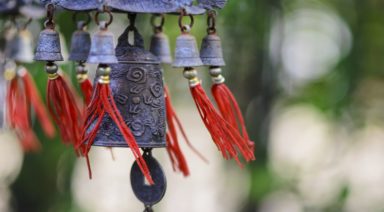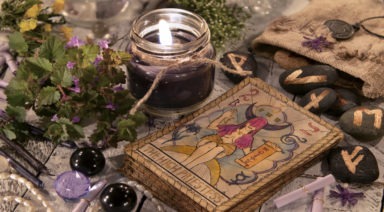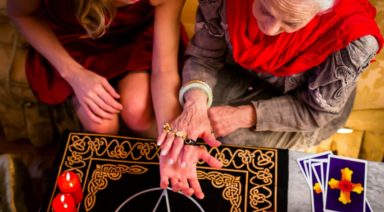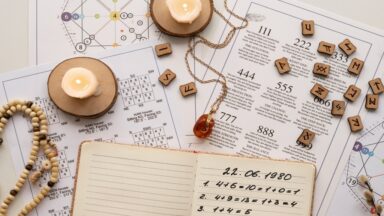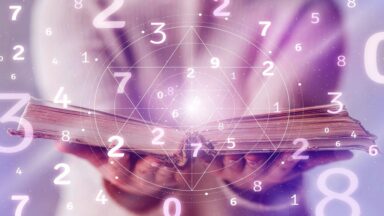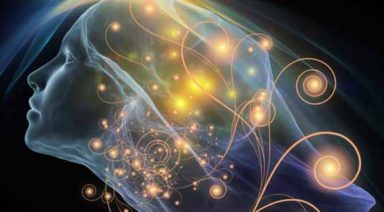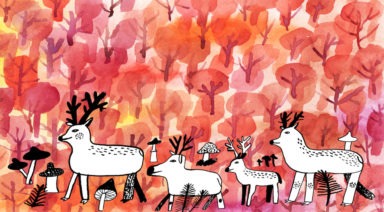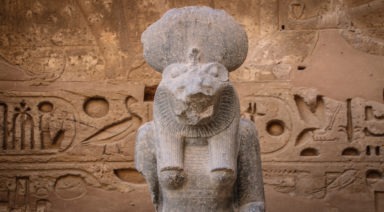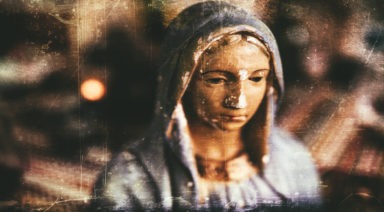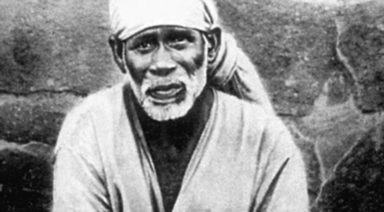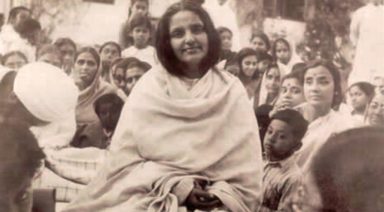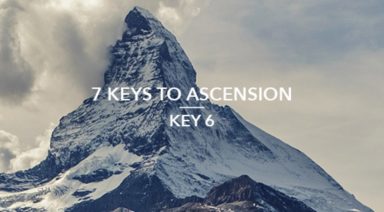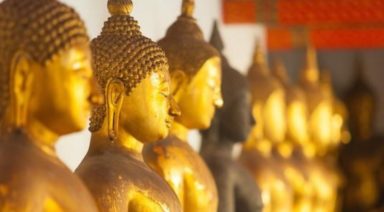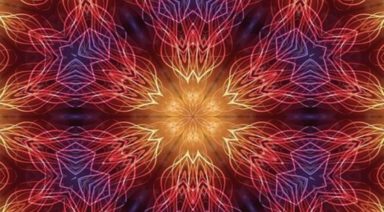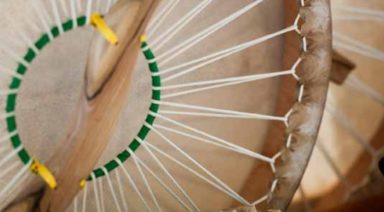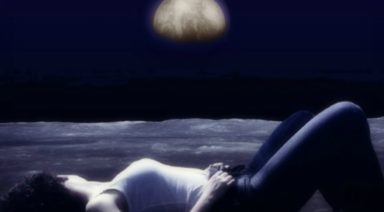Journey of the Tarot: How Major Arcana Meanings Mirror the Soul
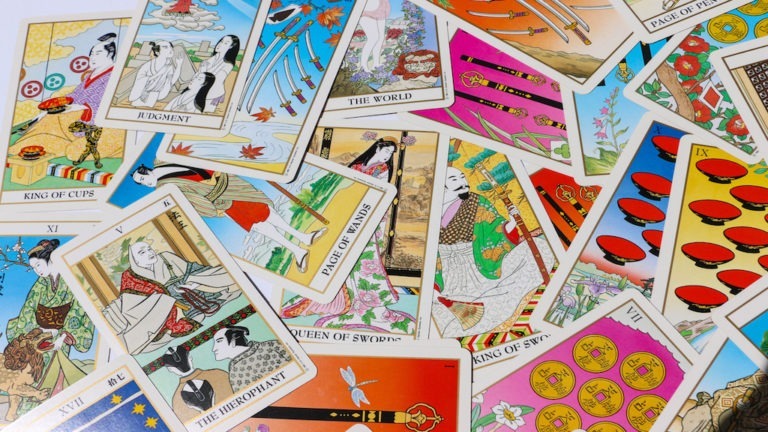
Cloaked in mystery and magic, the Tarot is more than a mere card game or parlor trick. In fact, the symbolism of this mysterious set of cards dives deeply into the realm of human consciousness and experience, revealing patterns of both the past, present, and probable future. The Major Arcana meanings in particular echo important aspects of the human experience, shedding light onto the many stages of spiritual development.
Divided into two separate Arcana, the Tarot tells the story of human experience using archetypal symbolism, numerology, and elemental meanings. The Major Arcana in particular speaks to what Carl Jung termed “the universal subconscious.” Each of the 22 cards symbolizes a different portion of the psyche, leading the querent on a spiritual journey from division to wholeness. On the path of the Major Arcana the seeker faces various trials and tribulations, which eventually lead to understanding and individuation.
The Story and Meaning of the Major Arcana
Many beginning Tarot enthusiasts are overwhelmed by the imagery and seemingly mysterious nature of the symbolism of the Major Arcana. Each of the 22 cards is packed with angelic figures, glyphs and characters that can both inspire and unsettle the reader. Yet if one approaches the Tarot as a storyline with the Fool as the central character, the mystery begins to reveal itself.
The Fool’s Journey: The Major Arcana Explained
Beginning with the number zero, the first character we will meet and follow throughout the Major Arcana is the carefree Fool. He appears in many decks clothed in a white tunic, flower in hand and feet dangerously close to a precipice. On the surface, The Fool appears unaware and dim, but in the Tarot, his actions and personality take on a different light.
With the Fool we have the point between points, the power of the present moment. He is unaware and thusly unafraid to face the perilous journey before him. It is the Fool’s innocence and openness that make the adventure possible.
The first two characters he encounters are the Magician and the High Priestess. The Magician represents pure dynamic masculine energy, and a willingness to project oneself out into the world. This is a card of harnessing one’s abilities towards the alchemical transformation of self or experience.
The High Priestess on the other hand, represents the pure feminine energy of incubation and arcane knowledge. She sits patiently at the gates of Solomon’s Temple, guarding the secrets of divine power. The High Priestess embodies the mysterious element of femininity and intuition, the intangible yet powerful forces that explore the realms of magic.
Now that The Fool has met his own personal masculine and feminine aspects, he meets the external embodiment of these characters. The Empress and The Emperor can be approached as the parents of The Fool, the earthly counterparts of The Magician and The High Priestess. As the mother of The Fool, The Empress is loving, abundant and giving. She is the feminine provider who feeds and nurtures her subjects.
The Emperor holds the energy of the father, creating firm foundations and boundaries in the external world. He protects his realm, building walls to encase the softness of the Empress. These parental figures instill their knowledge on the young Fool, defining his ideas of boundaries and security.
But the Fool must leave the safety of home, so next he encounters the dogma and structured world of The Hierophant. Here knowledge is passed down from heaven to Earth through the lens of hierarchy and teaching with a strong emphasis on religious institutions. Next the Fool learns the power of choice, symbolized by The Lovers card. It is the first instance where the Fool begins to realize that his future is in his own hands, and that his decisions will shape his path.
Now that The Fool has been educated, he must take this knowledge and apply it to the real world. The Chariot is his graduation, a sign that he has the necessary knowledge to embark upon the adventure. From here, he meets his first challenge: Strength. The Fool must overcome his base qualities by realizing that “mind over matter” is at times the best solution to a problem.
From the trial of Strength, the Fool is thrown into the introspective world of the Hermit. Alone with his own thoughts and removed from the world, the Fool realizes that life is in some ways a game to be played. The Wheel of Fortune appears next, as if the knowledge acquired by the Hermit is suddenly manifest. Life is a series of riddles and twisting turns, moved by both fate and choice, where one day things are up and the next day they are down.
The Fool comes to terms with this wild ride through the assumptions of the Justice card, where decisions are measured and enacted through a fair trial. But often enough, life is not so black and white. Soon the Fool finds himself in the quandary of the Hanged Man, suspended between two worlds in order to find a new perspective.
It is from this discomfort that he realizes that what he once took as blind truth is in fact the beliefs and ideas of his former teachers. The Death card appears to free him from these falsehoods, clearing away the words of the Emperor, Empress, Hierophant, and even the child the Fool once was.

The Fool is forever changed by this experience, and his new understanding is embodied by the angel of the Temperance card. Here we have a deeper spiritual understanding, where emotion is regulated and a middle path is forged between extremes. But with this new found clarity the hidden blind spots within the Fool himself are revealed, taking shape as the Devil.
Emerging from the darkness, the Devil speaks to the unconscious urges of the psyche which manifest as addiction and attachment. Luckily, this level of tension and manipulation is short lived, released by the shock and awe of the Tower. With a lightning bolt from heaven, the walls of the Fool’s inner world crumble, allowing for the growth and renewal of the Star.
The Star is one of the most magical and hopeful moments on the Fool’s journey, where healthy new ideas are planted and divine assistance flows freely from heaven. Yet this level of transcendence still has its own shadow. The profound and psychic Moon appears, reminding the Fool of all that is uncontrollable and mysterious. The Moon moves the tides of the ocean and the cycles of women, causing both the wild wolf and the tame dog to howl.
But night does not last forever, and the Fool’s journey is also nearing its end. The Sun rises once more and with it comes the promise of homecoming and return. The Fool finds himself at the gates of his ancestral castle, ready to reveal all that he has learned during his travels. The Judgement card is that revelation, where anything left unsaid is dealt with and the final inner work is completed.
The World represents the end of this journey, while also hinting at the cycle that is yet to come. This is one of the deepest aspects of the wisdom that the Tarot holds: life is an endless circle, a chance to learn and grow through experience. As long as we inhabit bodies on the Earth plane, there will be lessons to discover and conquer. Luckily there are tools such as the Tarot to help us understand ourselves, the world around us, and how best to thrive on our own archetypal journey.
Feng Shui Space Clearing and Salt Water Cure

As an energetically sensitive being, we may find ourselves affected by people, events and even spaces. Though subtle, we can often feel the shifts of energy which can bring us discomfort and unease. Practices clearing these spaces starts in our physical environment. When this physical container is clear, it allows the light of our soul to expand and create greater manifestations from within.
Feng Shui is an ancient practice of maximizing the energetic flow of a physical space. All things have Chi/Qi – a life force energy which is always in motion.
Paying attention to these trusted principles can help us be in more cooperation with the harmony of life around us. When we apply these methods, we may discover ease, joy, abundance and creativity is more easily able to find us.
Stagnation occurs when there is no flow. This stuck energy can feel like something is off, lethargy and simply being uninspired. When this blockage is allowed to fester, arguments, sickness, depression and loss of material wealth may result. The tensions will certainly mount if we do not pay proper attention to how energy is allowed to move around us. Feng shui space clearing is one practice we can engage to ensure the flow remains.
When to Clear Your Space
While routine cleansing should be a normal part of your home care, I like to also clear, charge and bless the home during significant moon phases like the Full and New Moons, during eclipses and at the holy-days. Each will give us a subtle reset which can program the energy of our space to resonate with our own intentions.
When matched with sacred days honored throughout time, we will get an extra boost in the form of blessings from the natural world. If we can match the vibration of clear intent with our personal goals, energies can more clearly manifest for us.
Anytime you feel unsettled in your space, this is a good indicator that feng shui space clearing may help. More obvious reasons could be a fight, a trauma or guests who may not match your frequency, which also offer an ideal time to clear your physical space.
Moving into a new home can be hectic, but merging with your new space so that it may be ready to hold all of you is also a must. Clear out the old tenants and introduce yourself to your home room by room.
And don’t feel like this ritual cleansing only applies to your home! Cars, offices and yards are carriers of energy and may need our attention from time to time.
Works spaces likewise are crucial as we all have tensions that arise at work. A little bit of feng shui clearing will help us be more focused, productive and at ease in this most important aspect of our lives.
Negative Energy
In feng shui, salt can purify “negative” energy bringing the charge back to neutrality. Some people feel the new energy as clear, purified and clean. It can then hold and lift the intentions we set.
Let us acknowledge that just because something feels funky, it doesn’t necessarily equate to evil or “negative.” Rather it is simply a disruption that affects our energy fields.
Like a duck swimming in a dirty pond, the dirty water is not bad, it is just affecting the duck in ways that are not optimum for its well being. Energy is the same, to label it as negative or bad will only program it to be so. Energy is neutral, it’s subtle affect on us is where we can be patiently aware.



